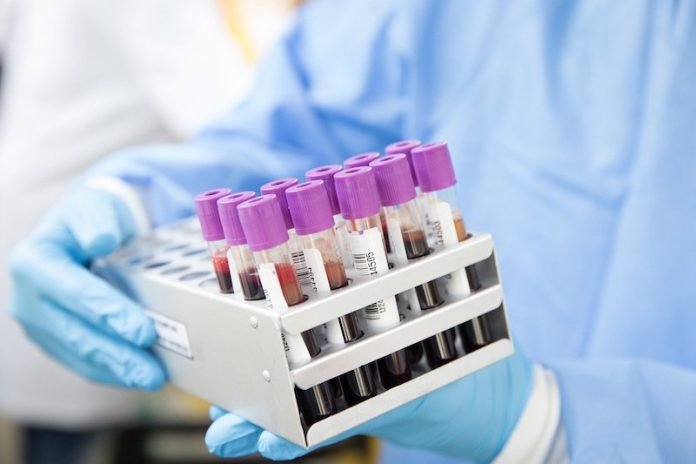
In a new study, researchers suggest that blood clotting disorders may explain some of the worst symptoms of COVID-19, including respiratory failure and pulmonary fibrosis.
The research was conducted by a team in Brazil affiliated with the University of São Paulo’s Medical School (FM-USP).
Around March 25, the researchers were treating a patient whose breathing was rapidly deteriorating.
When she was intubated, the team observed that her lungs were easy to ventilate. They weren’t hardened and stiff like those in someone with acute respiratory distress.
Shortly thereafter, the team noticed that the patient had an ischemic toe.
The latter condition has been referred to as COVID-toe and can affect all ten toes. It is caused by the obstruction of the small blood vessels that circulate blood in the feet.
The team observed a similar phenomenon many years ago in patients who underwent open-heart surgery with extracorporeal circulation.
They prescribed heparin, one of the most widely used anti-coagulant drugs worldwide.
In under 18 hours, the patient’s oxygen saturation improved, and her angry red toe regained a healthy pink color. The same effect was achieved with other patients treated at the Sírio-Libanês.
Since that day, the team had treated approximately 80 COVID-19 patients, and so far, none of them has died.
Four are currently in the ICU [intensive care unit]. The rest are in the ward or have been discharged.
Most studies show that severe COVID-19 patients require 28 days of mechanical ventilation on average, whereas those treated with heparin typically improve after ten to 14 days of intensive care.
Shortly after the first successful administration of heparin, the team used a minimally invasive technique and found focal bleeding linked to mini-clots (microthrombi) in the small blood vessels of the lungs due to platelet clumping.
The team says patients with SARS or MERS develop a strong inflammatory reaction in the lungs, and this can lead to a condition known as acute respiratory distress.
The pulmonary alveoli, the tiny sacs in which carbon dioxide is exchanged for oxygen, fill up with dead cells, pus, and other inflammatory substances, hardening the lung tissue and impairing oxygenation of the organism.
COVID-19 is different, at least initially. SARS-CoV-2 does not cause severe inflammation of the lungs but does cause the desquamation of the alveolar epithelial tissue.
The epithelial cells die after being infected, fall into the alveolar lumen, and leave the basement membrane exposed.
The organism’s defense system thinks the region is raw or ulcerated and assumes there’s a risk of hemorrhage, triggering a storm of interleukins [proteins that act as immune signalers] and what we call a ‘coagulation cascade’.
The platelets begin clumping together to form clots and ‘plug the leak’.
The clots block the lung’s small blood vessels and cause microinfarcts (cellular death or tissue necrosis).
The regions of tissue that die due to a lack of blood supply are replaced by scar tissue in a process called fibrosis.
In addition, microthrombi at the alveolar-blood vessel interface prevents the passage of oxygen to smaller arteries.
This explains why COVID-19 patients may not have difficulty breathing even though their oxygen saturation is low. Many come to the hospital walking and talking and very soon have to be intubated.
If the intravascular clotting is not rapidly treated, microinfarcts and fibrosis tend to spread throughout the lungs.
Opportunistic bacteria and fungi may infect the damaged tissue and cause pneumonia, as SARS-CoV-2 leads to a decrease in the number of immune cells (lymphopenia).
The patient may develop acute respiratory distress at the end of this process.
Heparin helps avert this outcome via two mechanisms. The team found that the drug dissolves the microthrombi that prevent oxygen from flowing from the alveoli to the pulmonary blood vessels and contributes to the regeneration of the vascular endothelium, the layer of epithelial cells that line the interior of blood vessels.
The team would like heparin to be used as soon as the oxygen saturation level falls below 93%, which may happen between the seventh and tenth days after the onset of flu-like symptoms and can be detected by a physician in a private or public clinic.
It should be stressed that heparin has strong effects on various physiological processes, and if the drug is administered without medical supervision, it can endanger the patient’s life.
Self-medication and failure to take side effects into account are particularly hazardous in the case of treatment for COVID-19.
The study is published in the Journal of Thrombosis and Haemostasis.
Copyright © 2020 Knowridge Science Report. All rights reserved.



